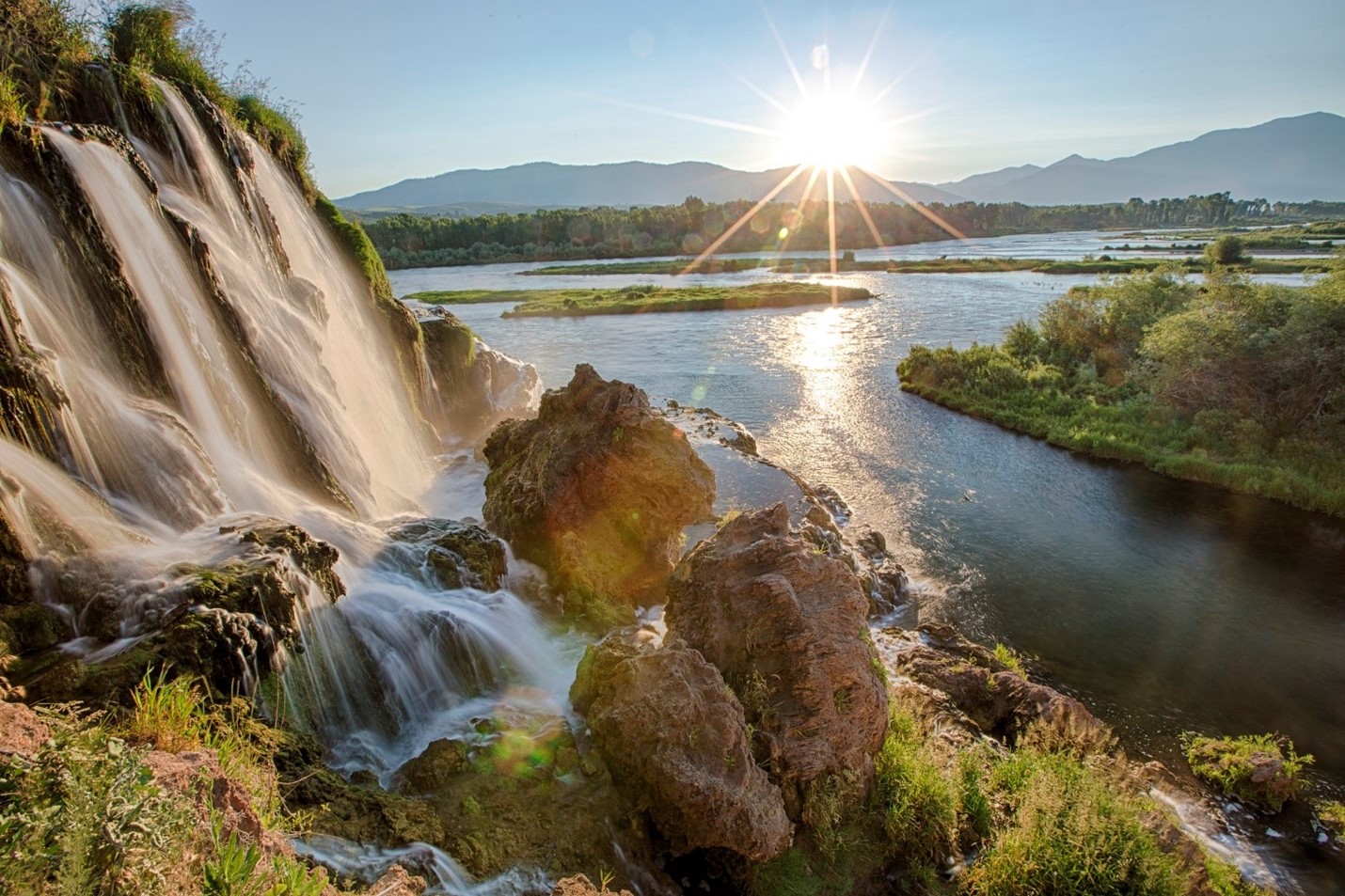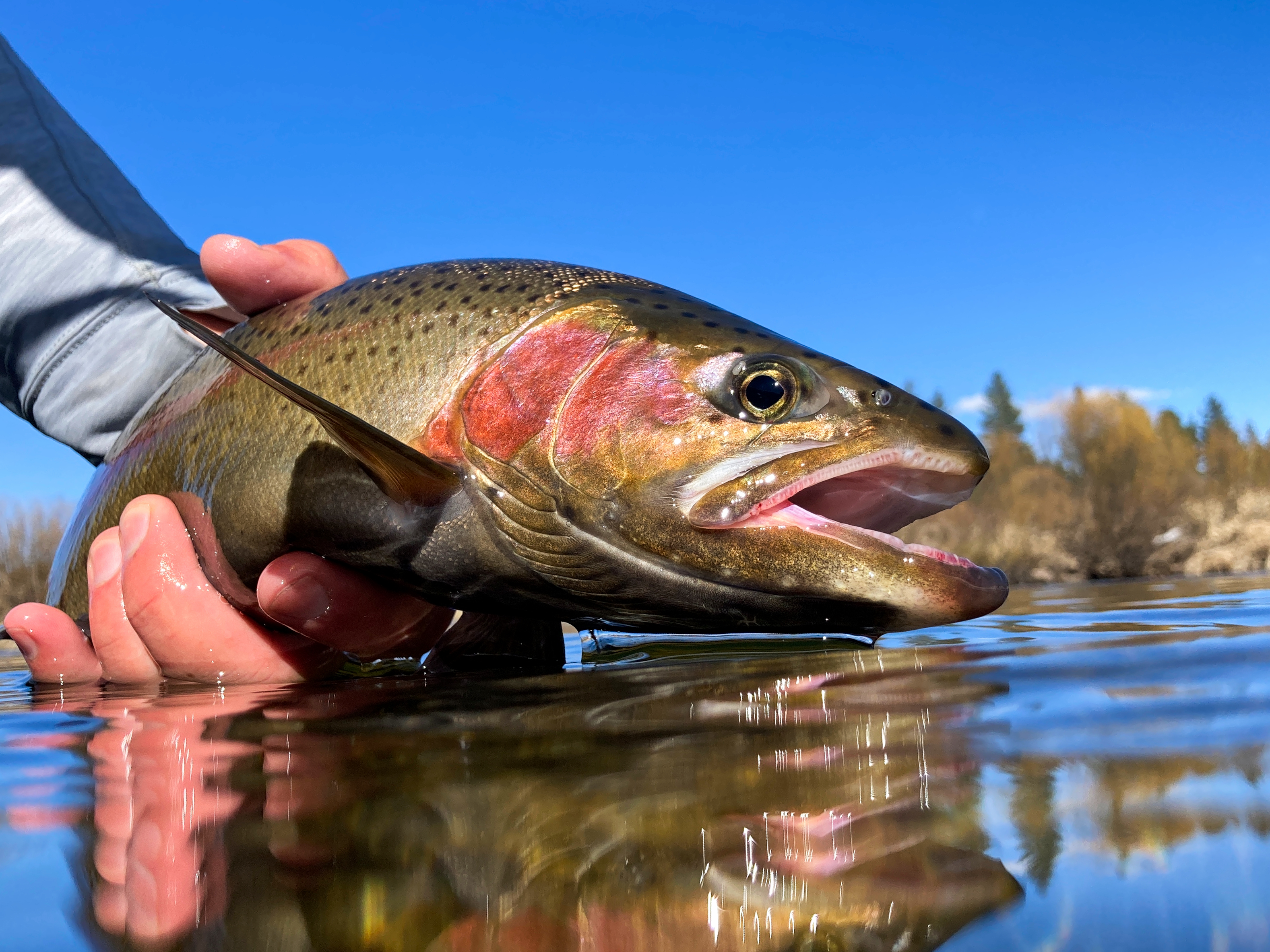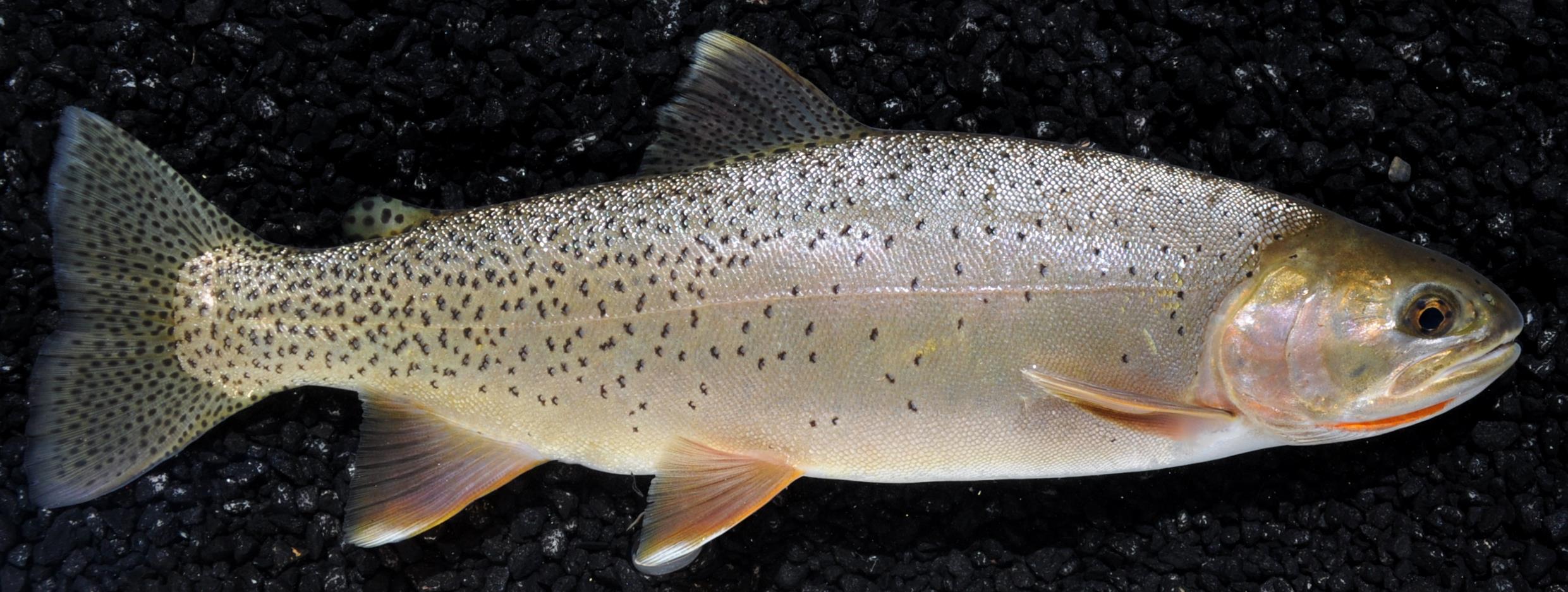The South Fork Snake River supports one of the most important river populations of native Yellowstone cutthroat trout in Idaho, as well as other popular non-native trout including rainbow trout and brown trout. However, the future of Idaho’s state fish – the cutthroat trout – is uncertain. The South Fork’s famous cutthroat trout are declining from both hybridizing and competing with non-native rainbow trout. Anglers can help boost cutthroat trout numbers by harvesting rainbow trout they catch here.
South Fork Snake River Rainbow Trout Harvest Incentive Program
Harvest rainbow trout in the South Fork Snake River for a chance to win cash.


About the South Fork Snake River Rainbow Trout Harvest Incentive Program
Idaho Fish and Game needs help from Idaho’s anglers to help protect the future of the South Fork’s legendary Yellowstone cutthroat trout. The South Fork Snake is one of the last major conservation strongholds for Idaho's state fish, but they are losing ground and only occupy 34% of their historical range in the lower Snake River drainage. If anglers harvest rainbow trout it can change this trajectory, however, if they do not it may result in the loss of an iconic native trout species.
Idaho Fish and Game is offering cash incentives to harvest rainbow and hybrid trout from the South Fork Snake River to help protect native Yellowstone cutthroat trout. This program was created at the request of anglers so they could contribute to cutthroat conservation and manage the threats from rainbow trout by increasing harvest. Each year, about 1,000 rainbow and hybrid trout are tagged and released back into the river. The microscopic tags (called “coded wire”) are placed safely in the snout of the fish and can be worth between $50 to $1,000 per fish and make anglers eligible for other great prizes!
How to Win
Anglers should turn in the heads of harvested rainbow trout and hybrids for a chance to win cash. If your rainbow trout or hybrids have a tag, you win! These tags contain vital information for biologists and list the total prize winnings for the angler. Anglers can turn in rainbow and hybrid trout heads to Idaho Fish and Game for scanning a couple of ways.
Turn in Your Catch Two Ways:
- Bring in the rainbow and hybrid trout heads to the Fish and Game regional office in Idaho Falls, during regular business hours Monday through Friday, 8 a.m. to 5 p.m. Winners will be notified and will receive money by mail. If anglers prefer to watch live as Fish and Game staff scan their fish for tags, bring fish heads to the office on the first Friday of each month during our live scan event.
- Turn in rainbow and hybrid trout heads to freezers set up at Conant and Byington boat ramps (May through September only). Anglers are advised to fill out a contact form, available at these locations, so Fish and Game can notify winners by phone and send their money by mail.
South Fork Snake River Daily Bag Limits
- Yellowstone cutthroat trout - zero or no harvest allowed.
- Brown trout – limit of two per day.
- Rainbow trout and Hybrids – no daily bag limit.
Be sure to review the latest Fishing Seasons and Rules booklet for the South Fork of the Snake River, as rules and limits could change.
Donate Fillets
Fish and Game helps anglers donate their catch to local food banks and soup kitchens. If you would like to donate, please clean, fillet and vacuum-seal your catch. Take them to the Fish and Game Regional Office in Idaho Falls during regular business hours. Donated fish not cleaned, filleted, and vacuum-sealed will not be accepted.
Identify Your Catch!

Common Questions About the Program
Why should I harvest rainbow trout from the South Fork Snake River?
If anglers do not participate in reducing rainbow and hybrid trout numbers in the South Fork Snake, biologists fear the iconic Yellowstone cutthroat trout will be lost from one of the few remaining conservation strongholds in Idaho. Yellowstone cutthroat trout are the only native trout to the Snake River basin above Shoshone Falls, but their numbers have declined tremendously relative to historical levels. The biggest threat to the future of cutthroat trout is hybridization from spawning with nonnative rainbow trout. Offspring from these hybrid crosses are fertile and can continue to reduce the genetic purity of cutthroat through further interbreeding. Eventually, cutthroat will be replaced by rainbows, which has already happened in Wyoming, Montana, and in Idaho on the Henry’s Fork, Warm River, Fall River and others.
Cutthroat trout are also Idaho’s state fish, and fishing for cutthroat in the South Fork provides a unique recreational value. There are countless places where anglers can catch rainbow trout, but the Yellowstone cutthroat’s range is extremely limited and their willingness to rise to a dry fly is unique. Catching big cutthroat on a dry fly on the fabled South Fork is a bucket-list opportunity for many anglers and an opportunity worth preserving.
What is a coded wire tag?
Coded wire tags are used to help collect essential data from fish or an individual animal. Widely used in salmon/steelhead management, these microscopic tags made of stainless-steel wire (about 3mm in length), are injected into the snout of the fish. They have a numerical tag number printed on the side that biologists record when tagging fish. Their tiny size and benign materials allow them to stay in place for many years with little effect.
Is eradication of rainbow trout the goal?
No, eradication of rainbow trout is not the goal. The current goal is to remove 30% of the population each year to provide cutthroat trout the best chance to maintain a resilient population while still maintaining some rainbow trout angling opportunities. The target number changes each year as population numbers change, but recently 30% has been 10 to 12,000 rainbows. This will help reduce competition and hybridization with native cutthroat trout. With anglers harvesting all rainbow trout caught, they can directly help Yellowstone cutthroat trout in the South Fork to remain the dominant fish species.
How did the rainbow trout get here originally?
Fish and Game introduced Rainbow trout to the South Fork around 1970, and stocking continued until 1981. This was done to increase angling opportunity and before the negative impacts of rainbow trout on native cutthroat trout were well understood. Although rainbow trout have not been stocked since then, they established wild populations that started to expand in the 1990s. By 2009, population surveys showed rainbow trout outnumbered Yellowstone cutthroat trout for the first time. Flows in a system regulated by dams have created habitat conditions that favor rainbow trout, and their numbers have continued to expand.
What happens if Idaho Fish and Game is not able to sustain the South Fork Yellowstone cutthroat trout population?
Losing the South Fork Snake River population would be a major loss to conserving this species and could increase the risk of being petitioned for listing under the Endangered Species Act. If this occurred, fishing opportunities for anglers in this region could be severely impacted.
If rainbow trout numbers continue to expand, Yellowstone cutthroat trout would decline to very low numbers, or even disappear from the South Fork. Hybridization would continue to occur and the Yellowstone cutthroat trout that evolved over thousands of years to this river would be lost. As of 2011, cutthroat trout only occupy 34% of their historical range in the lower Snake River basin.
What effect do irrigation diversions have on fish populations?
Throughout Idaho, various streams, creeks or rivers are legally diverted for irrigation purposes. Fish can follow the diverted water where they are often lost to the population. Some diversions can be problematic for fish, while others are not, and the impact of a particular diversion depends on several factors. Fish and Game has conducted studies on all of the diversions on the South Fork Snake River to see if the fish loss to these irrigations impacts the overall trout population. Many fisheries studies have shown that natural mortality (annual natural deaths) of trout populations is about 40-60% annually. The number of trout lost through irrigation diversion on the South Fork Snake is much lower than that and does not have an impact on the total population above the natural mortality rate.
What is Idaho Fish and Game doing to protect native cutthroat trout spawning areas?
Fish and Game have constructed fish weirs at all major spawning tributaries. These weirs direct fish into a trap where biologists can sort out Yellowstone cutthroat trout daily and pass them upstream for spawning. At the same time, rainbow trout are blocked from accessing these cutthroat spawning areas. Biologists have also been working since 2010 to remove rainbow trout and hybrids from Palisades Creek to help strengthen that cutthroat trout spawning population.
What is Idaho Fish and Game doing to protect Yellowstone cutthroat trout that spawn within the main stem of the South Fork Snake River?
Rainbow trout typically spawn several weeks earlier than cutthroat trout. Because of this, Fish and Game had been working with the US Bureau of Reclamation, to increase river flows to attempt to wash away rainbow trout eggs. However, recent research shows the river flows needed to make this work would flood out landowners along the river. While this strategy eventually proved to be unsuccessful at washing rainbow trout eggs from redds, it does improve the aquatic habitat within the South Fork.
Fish and Game has been incentivizing rainbow trout harvest for over 10 years. So far, angler harvest has been too low to keep this very productive rainbow trout population from increasing. Starting in 2018, Fish and Game began experimenting with boat “electrofishing” to remove Rainbow Trout from mainstem spawning areas to enhance the effects of harvest as translocating rainbow trout to other systems from the South Fork Snake River would cause the same population effects as anglers harvesting rainbows. Starting in 2021, Fish and Game have worked toward the goal of removing approximately 30% of the rainbow trout population annually. This was roughly 12,000 fish in both 2021 and 2022, based on the research that estimated the numbers of rainbow trout needed to be harvested to keep their populations from significantly overtaking cutthroat. Once captured, the rainbow trout were safely transferred to other waters like the Henrys Fork, Big Lost River, Snake River, and local community ponds where they still contribute to sport fishing.
What effect does “fish shocking” have on fish and insects found in the river?
Biologists use “electrofishing” to study populations of naturally spawned trout and remove rainbow trout from the South Fork of the Snake River. Using carefully modulated pulsed electricity, biologists temporarily stun trout so they can be scooped up with a net. Collected trout then recover in a livewell. Electrofishing temporarily stuns the fish. Injury rates to individual fish are very low when done properly and it does not cause negative effects to fish or insect populations.
How to avoid “fish shocking” efforts when recreating?
Each year, Fish and Game notify the public with a schedule of when and where they plan to electrofish on the South Fork. This schedule is meant to help anglers avoid certain river sections while electrofishing is in progress. Sign up for our email newsletters to receive these notifications and more.
How do anglers and outfitters feel about this incentive program?
Statewide surveys of Idaho anglers (both in 2017 and 2022) have consistently ranked managing native trout species as one of Fish and Game’s highest priorities. However, some anglers disagree that reducing rainbow trout is necessary. Some anglers seem to have mixed opinions. Some value the unique opportunity to fish for native cutthroat trout, while others prefer catching rainbow trout. Currently, the Idaho Fish and Game Commission has adopted a Fish Management Plan that prioritizes cutthroat trout conservation in the South Fork Snake River.
Idaho Fish and Game values the public involvement process as part of the strategy to achieve the long-term sustainability of populations and habitats. Anglers are invited to share their opinions on topics that are important to them by reaching out to a biologist at any Idaho Fish and Game regional office or providing comments at public meetings, or commenting on proposed Management Plans. Your input is important to us, and we want to hear from you. Sign up to our email newsletters to be alerted when public commenting opportunities are open.
